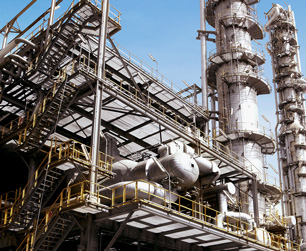Hexachlorocyclopentadiene (HEX)
| EPA Maximum Contaminant Level (MCL) |
0.05 mg/L |

Hexachlorocyclopentadiene (HEX) is an organic chemical used in the chemical industry to manufacture of other chemicals, including pesticides (heptachlor, chlordane, aldrin, dieldrin, endrin, mirex, pentac, and endosulfan), flame retardants, resins, and dyes.
HEX arrives in drinking water primarily through discharge from chemical factories.
Health Effects of HEX
Acute exposure, according to EPA, can cause “gastrointestinal distress; damage to liver, kidneys and heart.” The agency also warns that HEX can lead to kidney and stomach damage:
Some people who drink water containing hexachlorocyclopentadiene well in excess of the maximum contaminant level [0.05 milligrams per Liter] for many years could experience problems with their kidneys or stomach.
Water Treatment for HEX
The EPA recommends granular activated carbon (GAC) in combination with packed tower aeration (an air stripping method) for the treatment of HEX.
Sources: EPA (1), EPA (2), International Programme on Chemical Safety, Photo: WikiMedia, author: Secl
Site Index
Filtration Systems
- Aeration for Iron & Sulfide
- Backwashing Filters
(whole house & well units)
- Chlorine & Chemical Injectors
- Countertop Water Filters
- Garden Hose Filters
- Reverse Osmosis, Residential
- Reverse Osmosis, Commercial
- Shower Filters
- Specialty Filters
- Ultraviolet Systems
- Undersink Filters
- Water Softeners
- Whole House Filters
Cartridges
Parts
- Replacement Parts
- Faucets
- Filter Media
- Fittings
- Housings
- O-rings
- Pumps
- Pura UV
- R.O. Parts
- R.O. Tanks
- R.O. Booster Pump
- VIQUA UV